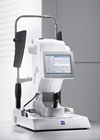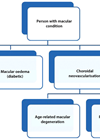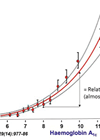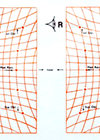The importance of ‘hands-on’ learning
Providing ongoing professional education and development for the allied professions out of the clinic or hospital setting is often quite challenging. The reorganisation of rotas, heavy clinic lists and financial constraints all add up to making the opportunity to learn...
Eye Capacity: clinical need should drive ophthalmic service provision
Almost two million people in the UK suffer sight loss, a number forecast to double over coming decades. Major causes of blindness are age-related macular degeneration (AMD), glaucoma, diabetic retinopathy, cataract and uncorrected refractive error. Prevalence of these sight-threatening conditions...
Addressing medical risk factors for diabetes and understanding the new systemic treatments
As global diabetes figures continue to rise, the importance of reducing the burden of macrovascular and microvascular complications of diabetes has never been so great. By 2025 it is estimated that five million people in the UK will have diabetes...
An introduction to research governance
Research is the process of acquiring new generalisable knowledge and should be fully integrated into health care work. There is a growing drive to encourage and further develop evidence-based practice in ophthalmology so that staff and patients benefit from improved...
A day in the life of...an ophthalmic imager / an orthoptic assistant
The ophthalmic imager My role as an ophthalmic / medical photographer has evolved, dramatically, since I began my career at Manchester Royal Eye Hospital, 30 years ago. Long gone are the days of developing and hand printing fluorescein angiograms in...
Myasthenia Gravis Masquerading as a Third Cranial Nerve Palsy
A 65-year-old man presented with a week’s history of binocular diplopia (in all directions of gaze) and a right partial ptosis. He was systemically well. His past medical history was unremarkable except for vitiligo. At presentation acuity was 6/6 bilaterally....
Warfarin Induced Suprachoroidal Haemorrhage Presenting as Acute Angle Closure Glaucoma
Spontaneous suprachoroidal haemorrhage is a rare but recognised entity. Anticoagulant therapy is a well known risk factor. We describe a case of warfarin induced suprachoroidal haemorrhage presenting as acute angle closure glaucoma in a patient with raised International Normalised Ratio...









